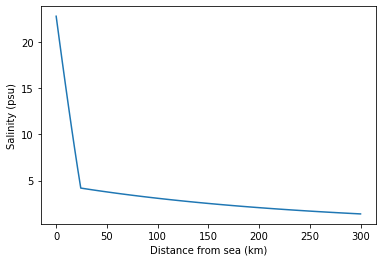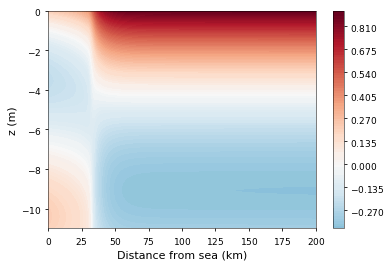P.B. Donkers1*, Y.M. Dijkstra1, H. M. Schuttelaars1
1 TU Delft,
Introduction
The salinity structure and water circulation in estuaries is the result of various interacting physical transport mechanisms, related to river flow, gravitational circulation and diffusion fluxes. Wind at the water surface results in an additional forcing that has been shown to affect both the estuarine circulation and salinity structure (MacCready et al., 2009). Although wind induced effects have been studied extensively using complex numerical models, a clear understanding of the resulting transport in terms of physical mechanism is still lacking. This presentation aims at obtaining such an understanding concerning the resulting salinity and circulation patterns.
Methods
To systematically analyse the influence of wind stresses on the estuarine circulation and salinity distributions, two existing models have been extended to include wind stresses. The first is a popular analytical model by MacCready (2004) based on vertically averaged salinity profiles. The second model (Dijkstra, 2020), is a semi-analytical model that allows for varying vertical salinity profiles, fully incorporating vertical advection and horizontal diffusion, which have been (partially) neglected in the first model.
Results
Using the extended MacCready model, it is found that for weak down-estuary wind stresses, no unique salinity profile can be identified, while for other wind speeds the salinity profile is unique. Using the extended Dijkstra model, which allows for additional processes, the results of the extended MacCready model can be reproduced for parameter values resulting in a unique salinity distribution, while a unique solution is found for weak down-estuary winds. As an example, using the extended model it is shown that up-stream winds can fundamentally change the salinity and velocity structures in estuaries. The typical direction of circulation, with downstream flow at the surface and upstream flow at the bottom, can be reversed by strong enough surface winds. These two modes of circulation can be present in the same estuary, even if all relevant parameters such as depth and wind speed remain constant over the length of the estuary (Figure 1). In this presentation, the salinity structure and the associated transport balances will be discussed for estuaries ranging from well mixed to a two-layer system.


Figure 1 Horizontal water velocity (m/s) (left) and vertically averaged salinity (right) for weak up-stream wind.
References
Dijkstra, Y. M. (2020). A unifying approach to subtidal salt intrusion modelling in tidal estuaries. To be published.
MacCready, P. (2004). Toward a Unified Theory of Tidally-Averaged Estuarine Salinity Structure. Estuaries, 561-570.
MacCready, P., Banas, N. S., Hickey, B. M., Dever, E. P., & Liu, Y. (2009). A model study of tide and wind induced mixing in the Columbia River. Continental Shelf Research, 278-291.
I. Surname1*, F.N. Another-Surname2 , Y. Next-Surname2
1 University Name, Country; 2 Organization Name, Country
* Corresponding author: mail.name@organization.org


